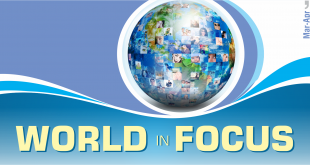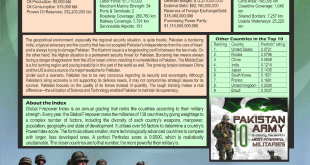By: Raqeeb Kakar
1. Introduction
a) Imagined and real development
b) Equality, opportunity and prosperity
2. Development as Economic Indicators
a) 34th largest economy
b) From tent city to leading textile exporter
3. Development as Transformation of People’s Lives
a) Electricity-generation increased
b) Highways network multiplied manifolds
c) Opening of new job markets
4. Anatomy of Development in Pakistan
a) Health
b) Education
c) Poverty
d) Policy consistency
e) Economy
f) Human capital
5. Barriers to Development of Pakistan
a) Political instability
b) Economic inconsistency
c) Foreign aid
6. Successful Development Models
a) Development model by Joe Studwell
b) Chinese development model
7. Suggested Measures
a) Local government
b) Economic management
c) Good governance
d) Foreign policy shift
8. Conclusion
Development, from an abstract to a concrete form, is an improvement in living standards and lifestyles of a people of an area. Some statisticians believe that development is an economic phenomenon while others opine that it revolves around physical geography of an area. Development, when imagined, is based on statistics and scorecards. But, in reality, development not only transforms people’s lives but also affects their living standards and lifestyles and, thus, real development exclusively ensures opportunities, equality and prosperity.
A cursory overview of ‘development’ in Pakistan, on the basis of economic statistics, suggests that Pakistan is the thirty-fourth largest economy in the world. Per capita income in the country has gone up four to five folds since its birth. Poverty has halved, estimated from 40 to 20 percent. At the onset, Pakistan could not feed 30 million people. Today, it not only feeds 207 million people with a satisfactory consumption level but is also the third largest rice-exporter. At the time of independence, Pakistan was nicknamed as a tent city in certain foreign newspapers but thankfully enough, it is one of the world’s leading textile exporters today, with its shipments sent across the globe.
Likewise, a country having only 100 kWh of per-capita electricity generation has miraculously gone up to a score of 436 kWh. Some 22 million hectare land area is under cultivation here. Moreover, a great length of 260,000 km roads and highways are ensuring fast transportation and connectivity. In fine, quick access to communication, smart phones and other gadgets, enrollment of students for higher education, availability of easy means of transportation and huge job markets have added much to the development in Pakistan.
Nevertheless, the role of development in Pakistan when it comes to transforming people’s lives is not so encouraging. For instance, Pakistan ranks 134th out of 177 countries on the Human Development Index. Infant mortality rate is 80 per thousand. There is a disappointingly low health status of women and children. Female labour force participation is still based on a minute quota and is, reportedly, the lowest in South Asia. Rural-urban income disparities have further thwarted the chances of improvement in an already bleak state of development in Pakistan. Furthermore, there exist wider regional disparities, e.g. urbanized Punjab and Khyber Pakhtunkhwa are more prosperous than rural Sindh and Balochistan and South Punjab. This undue division is bound to ensue a stagnant human development.
In order to investigate real development, one needs to examine state’s response to major drivers of development, including policy consistency, savings, reservoirs, human capital, productivity, structural reforms, private-sector dynamism, strong institutions, good governance, uniform education system, knowledge economy, adequate health facilities, gender equality, poverty reduction, population control, and all the related areas. There is no blinking at the fact that these are the matters that should be of grave concern for a state whether developed or otherwise. In the light of these, it seems appropriate to put up an open question: How serious Pakistan has been in the aforementioned grounds of sustainable development?
Additionally, development is altogether a constructive phenomenon. It is neither a gifted theory nor a fate-based practice. On the infrastructural grounds, development has been abused by a number of barriers in Pakistan including, but not limited to, political instability, inconsistent economic policies, emergence of civil and military bureaucracy as business leaders, conditional foreign aid, a huge bulk of significant brain drain and lack of brain gain and foreign investment, feeble law and order situation, etc. that have frequently downsized development which virtually has become a secondary focus of the state of Pakistan.
Joe Studwell, a renowned author, writes in his book ‘How Asia Works: Sources and Failure in the World’s Most Dynamic Region’: “It is the close alignment of finance with agricultural and industrial policy objectives that has facilitated the unprecedentedly rapid economic development of northeast Asia”. Thus three ingredients, he thinks, lie at the heart of success of northeast economies: (1) land reforms to pave way for small-plot farming; (2) state-led manufacturing by imposing export discipline on manufacturers; and (3) deploying a financial system that would support the first two ingredients. Chinese development model is the simplest to be imitated. China adopted Western economic model but after tailoring to suit its own needs, avoiding Westernization and welcoming soft form of globalization, and it worked with International Monetary Fund (IMF) and World Bank (WB) on its own terms. Can Pakistan borrow Chinese development model? It must do it in the light of following Suggested Measures.
It is high time administrative powers and resources devolved to local governments. A policy of zero tolerance must be ensured towards interruptions to political order. Sound economic management is the need of the hour in terms of converting trade into aid. A huge foreign policy shift towards Indian hostility, Afghan war, American alliance, regional proxy wars between Saudi Arabia and Iran can let us stay focused on our own development. With a slight alteration to an old Chinese proverb: “The best time to make a start was 71 years ago. The second best time is now.” So, the beginning should be made now, without any further delay. Our economic model should be international in inspiration and national in implementation. Policy change and institutional restructuring would no doubt guarantee us a kind of development that is real and may transform people’s lives in the truest sense. Or as it is concluded “good policies that remain unchanged eventually turn into bad ones”.
Poverty & Economic Growth in Pakistan
Research has shown that high levels of poverty in a particular region are correlated to how the resources are distributed in the society. The World Bank Poverty and Shared Prosperity Report 2018 has noted that from 2010-2015, the growth of incomes of the bottom 40 percent in Pakistan has been merely 2.7 percent whereas the growth in incomes of the average population was recorded at 4.3 percent.
This is in contrast to other developing countries such as Latvia, Brazil, Peru and Egypt where the incomes of the bottom 40 percent are growing faster than the average population. It is imperative that in order to drag people out from the shackles of poverty, policymakers must fight to reduce income inequalities present in the society.
Economic growth must be broad–based and inclusive. The European Anti-Poverty Network (EAPN) has pointed to some key factors that make a person more at risk of being in poverty such as unemployment, low levels of education and skills, gender, disability or ill-health, being a member of minority ethnic groups and lastly, living in a remote or disadvantaged community. Governments must ensure to formulate policies which address and remove societal inequalities in terms of economic opportunities for these particular groups. Growth, which is sustainable, broad-based and inclusive and which provides a chance for everyone to benefit from it, can lead to reduction in poverty levels.
 Jahangir's World Times First Comprehensive Magazine for students/teachers of competitive exams and general readers as well.
Jahangir's World Times First Comprehensive Magazine for students/teachers of competitive exams and general readers as well.



